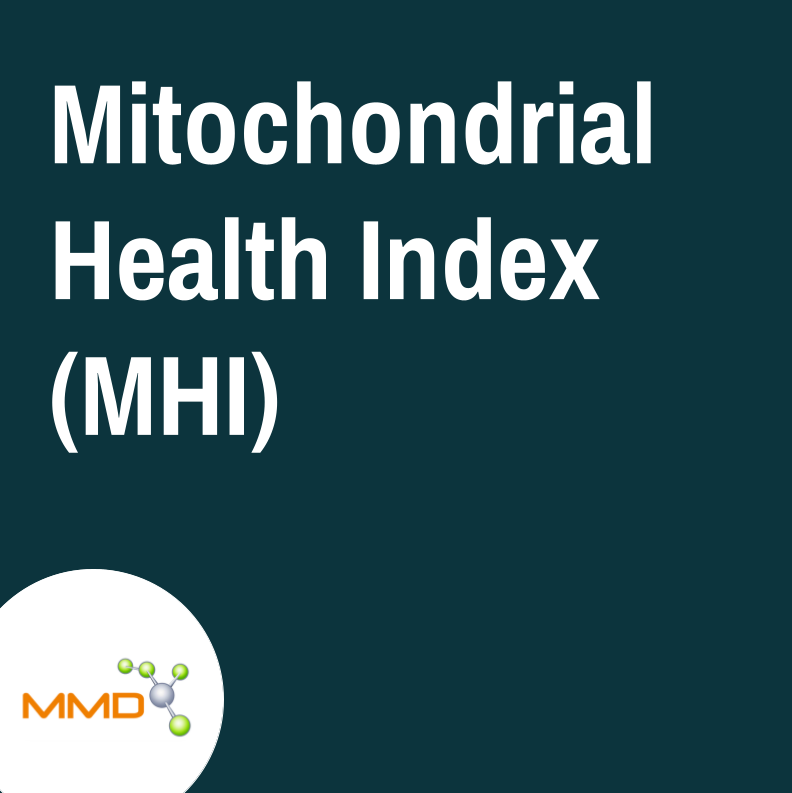Description
1) Basal respiration rate
This parameter shows how much oxygen is being used in the mitochondria in the mitochondria at rest (in pmol O2/min). If the basal oxygen consumption is high at rest, without the mitochondrion being intentionally put under stress, this suggests that the mitochondrion is having to address specific challenges, e.g. inhibitors of individual complexes of the electron transport chain (heavy metals, for example), toxins such as pesticides or lipopolysaccharides, and/or oxygen radicals.
2) ATP turnover
This is the rate of mitochondrial ATP synthesis in a defined basal state after the proton leak has been deducted.
3) Coupling efficiency/proton leak
A proton leak is a physiological process in which oxidative phosphorylation is uncoupled from ATP synthesis, and energy is dissipated as heat. Coupling efficiency is the proportion of the oxygen consumed to drive ATP synthesis compared with that driving proton leak. The cause of reduced coupling efficiency is a proton leak. An increase in proton leak is consistent with the mitochondria becoming less efficient. The causes of a proton leak include a) high concentration of damaging free radicals; b) insufficient antioxidants; c) inhibitors of ATPases, including ATP synthase; d) suboptimal mitochondrial membrane integrity.
4) Non-mitochondrial respiration
This parameter is an index of oxygen-consuming processes that are not mitochondrial. In leucocytes, the non-mitochondrial respiration rate is typically due to enzymes associated with inflammation, including cyclooxygenases, lipoxygenases and NADPH oxidases. It is generally raised in the presence of stressors, including reactive oxygen species (ROS) and reactive nitrogen species (RNS). An excessive level is regarded as a negative indicator of mitochondrial health.
5) Maximum respiration
This is measured by putting the cell under stress, into a (standardised) state of increased energy demand. This reveals the maximum oxygen consumption that can take place at Cytochrome c oxidase (Complex IV). Lower than expected maximum respiration is an indicator of mitochondrial dysfunction: the mitochondria should be capable of expanding their capacity when under energy demand.
6) Reserve respiration capacity
The difference between the basal respiration rate and maximum respiration rate is the reserve capacity of the mitochondrion, which is a measure of the maximum potential respiratory capacity the cell can utilise under conditions of stress and/or increased energetic demand. The lack of reserve respiratory capacity indicates a mitochondrial dysfunction that may not be apparent under basal conditions. Causes of a limited ATP reserve are a) insufficient ability to utilise fuels (glucose, fatty acids); b) reduced mitochondrial mass (shown by ratio of mitochondrial DNA to nuclear DNA); c) dysfunctional complexes of the electron transport chain; d) altered metabolic status as a result of infection (viral, bacterial), anti-tumour immune responses, autoimmune disease, etc. The Cell Danger Response may trigger this for example, where more oxygen needs to be utilised in the cytosol, and therefore less is available to the mitochondria, even when stress is put upon the cell and more energy is needed.
7) Energetic phenotype
Differentiating ATP generation from glycolysis and oxidative phosphorylation is vital for cellular bioenergetics but has traditionally been hard to quantify. The Seahorse XF is able to calculate the ratio of ATP generation by each pathway from simultaneous measurements of extracellular acidification and oxygen consumption in the basal state as well as on energy demand. The MHI results give a ratio of oxygen consumption to glycolysis on energy demand, and the percentage the cell is using of the one versus the other, as percentages of what it should optimally be capable of.
8) Calculation of the MHI
The Mitochondrial Health Index itself is calculated from the various parameters measured in the test, as follows:
MHI = log (reserve capacity) x (mitochondrial ATP turnover)
(non-mitochondrial) x (proton leak)

